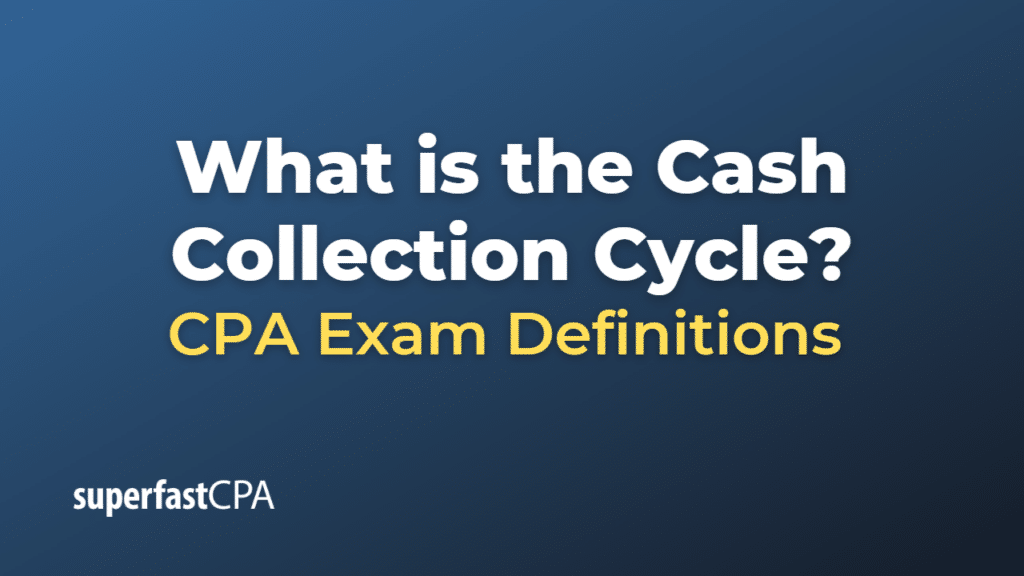Cash Collection Cycle
The cash collection cycle, also known as the cash conversion cycle or operating cycle, is a financial metric that measures the time it takes for a company to convert its investments in inventory and other resources into cash flows from sales. It is an important indicator of a company’s liquidity, operational efficiency, and cash management.
The cash collection cycle consists of three main components:
- Days Inventory Outstanding (DIO): This measures the average number of days it takes for a company to sell its inventory. A shorter DIO indicates that the company is selling its inventory more quickly, which is generally a positive sign.
- Days Sales Outstanding (DSO): This measures the average number of days it takes for a company to collect cash from its customers after a sale has been made. A shorter DSO indicates that the company is collecting cash from customers more quickly, which can improve cash flow.
- Days Payables Outstanding (DPO): This measures the average number of days it takes for a company to pay its suppliers for the goods and services it has purchased. A longer DPO allows the company to hold onto its cash for a longer period, which can be beneficial for managing cash flow.
The cash collection cycle can be calculated using the following formula:
Cash Collection Cycle = DIO + DSO – DPO
A shorter cash collection cycle is generally considered better, as it indicates that a company is able to convert its investments in inventory and other resources into cash more quickly, which can improve liquidity and cash management. However, it is essential to consider industry norms and a company’s specific business model when evaluating its cash collection cycle.
By optimizing the cash collection cycle, a company can improve its cash flow, reduce the need for external financing, and ultimately enhance its financial stability and profitability.
Example of the Cash Collection Cycle
Let’s consider a hypothetical example of two companies, Company A and Company B, both operating in the same industry. We’ll compare their cash collection cycles using the given information about their Days Inventory Outstanding (DIO), Days Sales Outstanding (DSO), and Days Payables Outstanding (DPO):
Company A:
- DIO: 40 days
- DSO: 30 days
- DPO: 20 days
Company B:
- DIO: 30 days
- DSO: 25 days
- DPO: 15 days
To calculate the cash collection cycle for each company, we’ll use the formula:
Cash Collection Cycle = DIO + DSO – DPO
Company A: Cash Collection Cycle = 40 days (DIO) + 30 days (DSO) – 20 days (DPO) = 50 days
Company B: Cash Collection Cycle = 30 days (DIO) + 25 days (DSO) – 15 days (DPO) = 40 days
In this example, Company B has a shorter cash collection cycle (40 days) compared to Company A (50 days). This indicates that Company B is more efficient in converting its investments in inventory and other resources into cash flows from sales. Company B sells its inventory more quickly, collects payments from customers more promptly, and holds onto its cash longer before paying suppliers.
It’s important to note that these figures should be considered relative to the industry average and the specific business models of each company. However, in general, a shorter cash collection cycle can lead to better liquidity, cash management, and operational efficiency.













